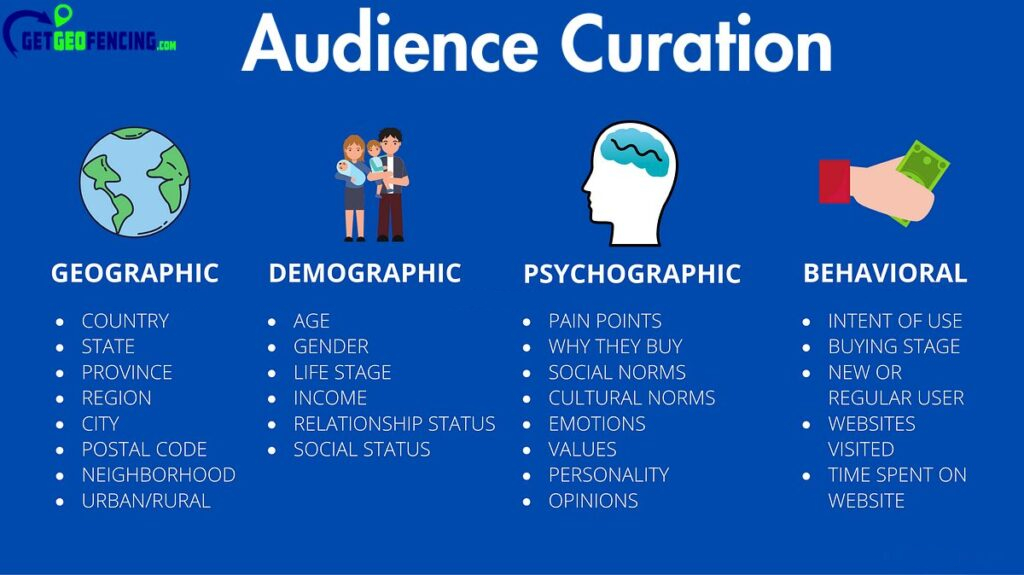Addressable Audience Curation

What is addressable audience curation?
Addressable audience curation is the strategic process of identifying, segmenting, and targeting specific groups of individuals who are most likely to engage with your brand, product, or service. It involves leveraging data and analytics to create highly personalized and relevant marketing campaigns that resonate with your target audience.
In today’s digital landscape, where consumers are bombarded with countless marketing messages, the ability to reach the right people at the right time is crucial for businesses to stand out and drive meaningful results.
Addressable audience curation empowers marketers to cut through the noise, deliver personalized experiences, and maximize the impact of their marketing efforts.
- Improve marketing efficiency: By focusing your efforts on the right people, you can optimize your marketing budget and achieve higher returns on your investments.
- Enhance customer experience: Delivering personalized and relevant content to your audience creates a more engaging and satisfying experience, fostering stronger brand loyalty.
- Increase conversion rates: Tailoring your marketing messages to the specific needs and interests of your target audience significantly improves the likelihood of conversion.
- Gain a competitive edge: Effective addressable audience curation allows you to outperform your competitors by reaching and connecting with your ideal customers more effectively.
- Drive long-term growth: By continuously refining and improving your addressable audience curation strategies, you can build a sustainable competitive advantage and drive long-term business growth.
.

Understanding your target audience
The foundation of successful addressable audience curation lies in a deep understanding of your target audience.
This involves gathering and analyzing data from various sources to create detailed buyer personas that capture the demographic, psychographic, and behavioral characteristics of your ideal customers.
Key elements to consider when defining your target audience include:
- Demographic factors: Age, gender, income, education level, location, and other relevant demographic information.
- Psychographic factors: Interests, values, attitudes, lifestyle, and pain points.
- Behavioral factors: Online browsing and search patterns, content consumption habits, purchase history, and engagement with your brand.
By developing a comprehensive understanding of your target audience, you can tailor your marketing strategies to their specific needs and preferences, ultimately driving higher engagement and conversion rates.

Best practices for effective addressable audience curation
To ensure the success of your addressable audience curation efforts, it’s essential to follow these best practices:
- Continuously gather and analyze data: Regularly collect and analyze data from various sources to keep your audience insights up-to-date and accurate.
- Prioritize data quality and accuracy: Implement robust data governance and cleansing processes to ensure the integrity and reliability of your audience data.
- Segment your audience thoughtfully: Carefully define your audience segments based on a deep understanding of their needs, behaviors, and preferences.
- Personalize your marketing messages: Tailor your content, offers, and communication style to resonate with each specific audience segment.
- Test and iterate: Continuously test and refine your addressable audience curation strategies to optimize their performance and adapt to changing market conditions.
- Collaborate across teams: Foster cross-functional collaboration between marketing, sales, and customer service teams to ensure a consistent and effective addressable audience curation approach.
- Stay compliant with data privacy regulations: Ensure that your addressable audience curation practices adhere to all relevant data privacy laws and regulations, such as GDPR and CCPA.
By following these best practices, you can build a sustainable and effective addressable audience curation strategy that drives long-term business success.
Best practices for effective addressable audience curation
To ensure the success of your addressable audience curation efforts, it’s essential to follow these best practices:
- Continuously gather and analyze data: Regularly collect and analyze data from various sources to keep your audience insights up-to-date and accurate.
- Prioritize data quality and accuracy: Implement robust data governance and cleansing processes to ensure the integrity and reliability of your audience data.
- Segment your audience thoughtfully: Carefully define your audience segments based on a deep understanding of their needs, behaviors, and preferences.
- Personalize your marketing messages: Tailor your content, offers, and communication style to resonate with each specific audience segment.
- Test and iterate: Continuously test and refine your addressable audience curation strategies to optimize their performance and adapt to changing market conditions.
- Collaborate across teams: Foster cross-functional collaboration between marketing, sales, and customer service teams to ensure a consistent and effective addressable audience curation approach.
Addressable audience curation case studies
To illustrate the power of addressable audience curation, let’s explore a few real-world case studies:
- Retail Brand: A leading retail brand used addressable audience curation to segment its customer base and deliver personalized product recommendations and offers. By leveraging customer data and advanced analytics, the brand was able to increase its online conversion rate by 25% and achieve a 20% lift in average order value.
- B2B SaaS Company: A B2B SaaS company utilized addressable audience curation to identify and target its ideal customer profile. By creating highly personalized marketing campaigns, the company was able to increase its lead-to-customer conversion rate by 35% and reduce its customer acquisition cost by 18%.
- Non-Profit Organization: A non-profit organization focused on environmental conservation used addressable audience curation to segment its donor base and tailor its fundraising appeals. This strategy resulted in a 28% increase in donor retention and a 15% uplift in average donation amount.
These case studies demonstrate the tangible benefits of implementing effective addressable audience curation strategies, from driving higher conversion rates and revenue to improving customer engagement and loyalty.

Conclusion
In today’s competitive and cluttered marketing landscape, the ability to effectively reach and engage your target audience is crucial for business success. Addressable audience curation is a powerful strategy that enables you to identify, segment, and target your ideal customers with personalized and relevant marketing campaigns.
By leveraging data-driven insights, advanced segmentation techniques, and tailored marketing strategies, you can cut through the noise, deliver exceptional customer experiences, and achieve impressive business results. As you embark on your addressable audience curation journey, remember to continuously gather and analyze data, test and iterate your strategies, and stay compliant with data privacy regulations.
Use GetGeofencing for all of your audience curation needs. Getgeofencing has over 20 years of audience curation excellence. Politicians, small businesses, and fortune 500 companies all trust Getgeofencing.

